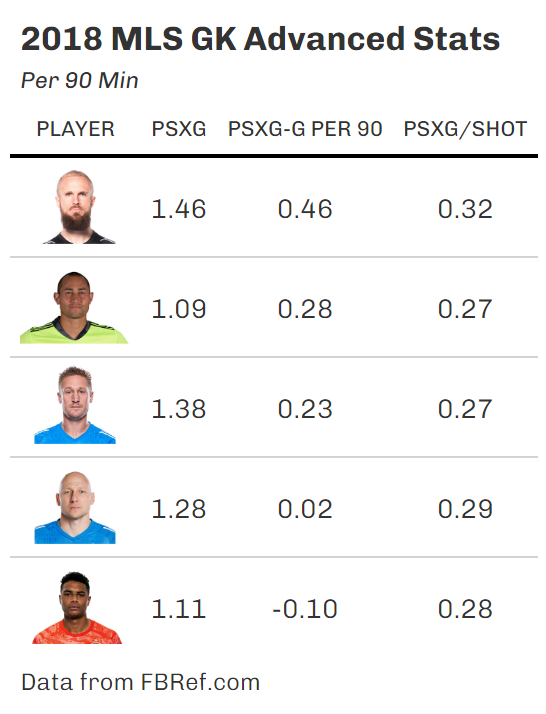Now three seasons removed from finishing on top of the Western Conference, but fresh off finishing at the bottom of the West last year, the Colorado Rapids have made some major moves this offseason.
First, the Rapids hired Chris Armas as their head coach. Colorado sporting director Padraig Smith has mentioned that he wants to play "a variant on energy drink football", which makes sense with Armas’ background as the former New York Red Bulls manager. On the personnel side, Smith brought attacking midfielder Djorde Mihailovic back to MLS, signed former New York Red Bull Omir Fernandez, and is reportedly close to helping left back Sam Vines make his return to Colorado.
All three of those outfield moves add pretty clear value ahead of a new season.
Another move that earned plenty of more mixed attention was the addition of U.S. men’s national team goalkeeper Zack Steffen to the club. Steffen, who won the 2018 MLS Goalkeeper of the Year award and signed for Manchester City in 2019, but struggled to break into Pep Guardiola’s squad. The 28-year-old hasn’t appeared for the USMNT recently and was last on loan at Middlesbrough before coming back to MLS.
Using data, let’s evaluate how impactful Steffen is likely to be at his new club.
One stat that is especially useful when assessing a goalkeeper is called “Post-Shot xG - Goals”. Now, why is it so helpful? Well, it’s a transferable stat across leagues, which is important when we’re evaluating a player like Steffen who has played in MLS and several European leagues while on loan from Manchester City.
To peel back the curtain on what this stat actually tells us, PSxG-G takes the number of goals conceded by a keeper and subtracts it from the number of goals expected to be conceded by a keeper. Those expected goals are taken from a post-shot xG model, where a shot towards the corner earns a higher value than a shot right down the middle, instead of the normal xG models you normally hear about.
Getting back to the Rapids, many of their issues in 2023 were in the back. According to FBref, Colorado had the fifth-worst PSxG-G value in MLS last year, tied with Wooden Spoon-winners Toronto FC.
Two goalkeepers, William Yarbrough and Marko Ilic, mostly split time in net for the Rapids. Yarborugh, who reportedly had his rights traded to the San Jose Earthquakes early this offseason, was benched from July onward for Ilic, who, uh, didn’t exactly have a great time in net. In fact, Ilic’s shot stopping metrics were the worst in MLS.

Now, keep in mind that Ilic wasn’t getting much help from his defense, as on average, he faced some of the most difficult shots in MLS. Thanks to the PSxG per shot category in the chart up above, you can see that Ilic faced even more difficult shots than Yarbrough. Overall, though, Ilic really struggled, and using an international slot on a goalkeeper – Ilic is Serbian – is very difficult to rationalize in MLS. That is, unless they’re Roman Burki or Daniel, who were absolutely elite last year by the underlying numbers.
With a big goalkeeping issue on their hands, the Rapids looked to Steffen to bring top-tier shot stopping back to Colorado. He’s a former USMNT No. 1 and MLS Goalkeeper of the Year, so he has to be good.
…right?
That’s where things get a little more muddled.
Let’s revisit 2018 for a moment. More than five years ago, the folks over at American Soccer Analysis clamored for someone like Stefen Frei or Tim Melia to win the award. However, Steffen won it thanks to an overwhelming share of the player vote and club vote. Compared to other four finalists, here’s how Steffen’s shot stopping metrics fared.

The key shot stopping metric we talked about earlier, PSxG-G, has him at the bottom of the five finalists. That means that by the numbers, Steffen’s season wasn’t actually worthy of winning the title of the league’s top goalkeeper. Frei’s metrics are up there with some of the best numbers you’ll ever see for a keeper – he faced difficult shots and saved almost half a goal per 90. For Steffen, then, an award won during his last full season in MLS isn’t the positive indicator it might seem to be.






